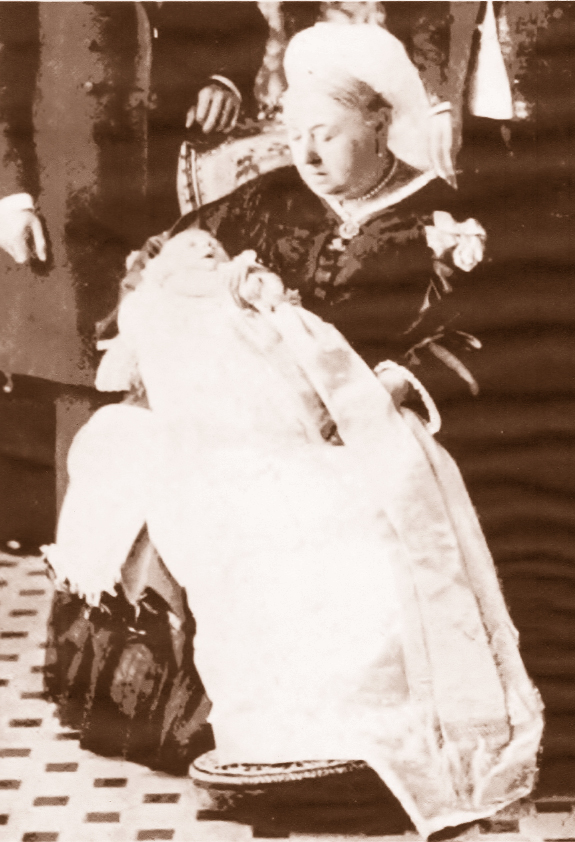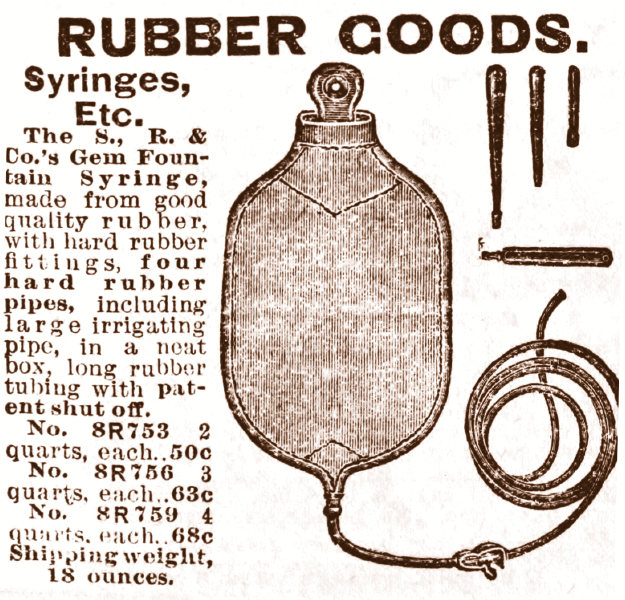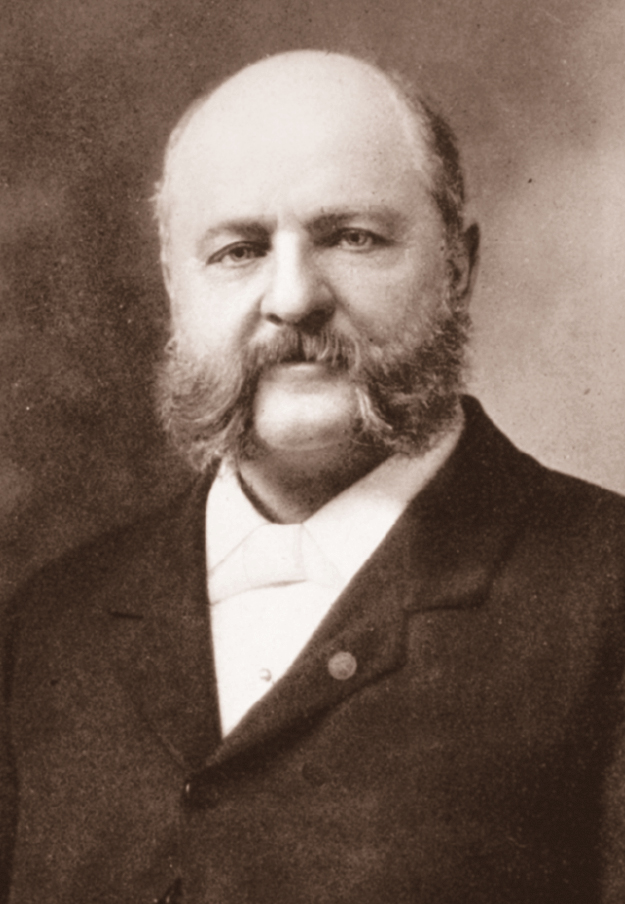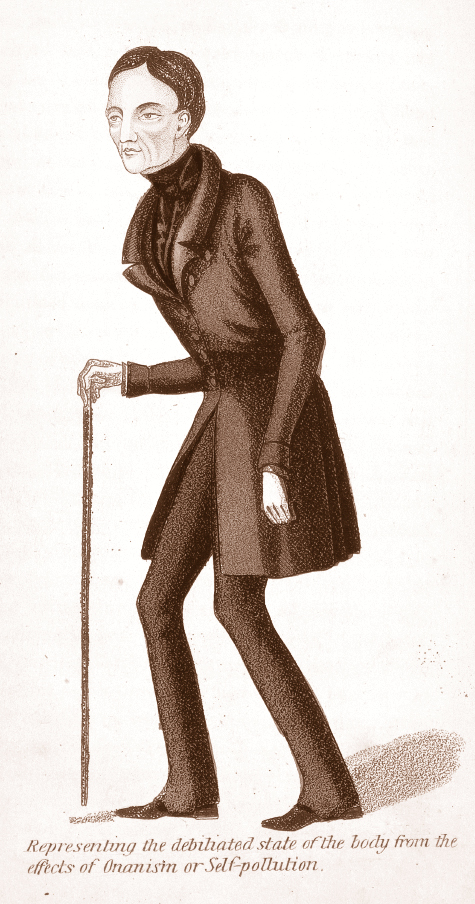You’re probably already pregnant. There isn’t a whole lot else to do for entertainment in the evenings. In no time at all, you can expect to be expecting. You’re going to get “k’napped,” to use a term of the day. The infantry is coming. You’ll be set to launch. Plead the belly. Lay a chit. You’ve been playing tricks and gone lumpy!
Sometimes Natural Isn’t Best
If the prospect vexes you, good; you’ve been paying attention. Giving birth in a time when the greatest and only obstetrical innovation available is the newly fashioned baby-yanking forceps is not going to meet your twenty-first-century standards for a satisfactory birth plan.
Although, for the record, you should be very grateful for these forceps. They really were better than nothing. In fact, not using them changed the course of British history. At the beginning of the nineteenth century they were not popular. They existed, but it was the fashion among doctors to take a “conservative management” approach to childbirth, what the twenty-first century would proudly refer to as natural childbirth. So forceps were not used when King George IV’s only legitimate daughter and heir, Princess Charlotte, went into a fifty-hour labor in 1817. The baby was sideways, and the doctors made no attempt to turn him. The child was stillborn, Charlotte died of internal hemorrhaging, and the overseeing physician soon committed suicide. In the wake of this tragedy, noninterference lost its popularity. And subsequently, with no heir, King George’s crown passed through a younger brother down to the only remaining royal descendant, a young woman named Victoria.
It could very well be that the whole reason there is a Victorian era is that those forceps weren’t used. Victoria herself had no problem engaging whatever interventions were available, including being knocked out by chloroform (thereby making pain management during childbirth socially acceptable), and delivered nine babies with no fatalities. Most women weren’t so lucky, especially in a culture that did not encourage robustness in fine ladies.
Why Bother with Babies?
Now, if you’d ended up farther west, you might not mind being afflicted with numerous pregnancies so much. You might even be fine with birthing yourself a whole plague of babies. If you were a nineteenth-century farmer’s wife, yanking your existence from the stubborn mud of a Nebraskan winter with chapped and bleeding hands, you’d probably barely notice if someone tossed another baby atop that mess.
Having many children was an investment for the rural and moderately poor. You were financing your own retirement with every ounce of mother’s milk your toothless little millstones sucked down. By the time your oldest daughter was seven, she’d be doing a quarter of your housework. By the time all of the children were out of diapers, your main job would be cooking and barking orders, ideally. And when you were too old to work, it would then be their turn to shove milk into your toothless mouth.
But that is not where you landed. In the Victorian life you’ve been given, your retirement was settled generations ago, with annuities rolling into your husband’s bank account in perpetuity. Your survival is not so dependent on physical labor that you must breed your own workforce. So what need have you for children?
Well, because you want them, of course. They’re life’s greatest joy! They’re your legacy! Women who complain about the trials of motherhood simply do not have the fortitude you have. “Fortitude” is your collective name for the nurse, nannies, and governess in your employ. If you wish, you need view your children, spit-shined and polished, only one hour a day, after which Nurse will thrash them soundly if they are not on their finest behavior. Children are treasures!

Living treasures. Now take them back to their containment area. These drapes are new, and the children are getting the porridge stink of youth all over them.
But for heaven’s sake, you only need two or three. It’s indecent to have many more, no offense to Her Majesty’s brood (she averaged about one birth for every two years her husband lived). But she was providing English heads to fit under the many crowns of Europe. Granted, her grandchildren would end up raining death from above on each other’s countries shortly after her passing, in World War I. Family reunions must have been terribly awkward. But Her Majesty had to do it, for the sake of the empire. It didn’t work, but we love her for her sacrifice. Especially since Queen Victoria detested pregnancy and thought babies were gross. To her grown daughter she wrote:

Ugh. Ribbit.
“I like them better than I did, if they are nice and pretty.… Abstractedly, I have no tender [sic] for them till they have become a little human; an ugly baby is a very nasty object—and the prettiest is frightful when undressed. Until about 4 months; in short as long as they have their big body and little limbs and that terrible froglike action.”
But for you, since you have no empire to populate or farm to run, having gobs of babies is just declaring your poor self-control to the neighborhood. It’s like putting out your booze bottles for recycling so everyone can see how much you drink, except it’s sex.
The best thing that could be said for childbirth in the 1800s was that it wasn’t as deadly as it used to be. There was practically, oh—say, a 70 percent chance you and the child would live? Nineteenth-century childbirth is a game of Russian roulette where even if you win, your perineum will be badly torn with no antibiotic ointment to heal it and where for the rest of your life you’ll tinkle when you sneeze.
So I certainly can’t argue if you’ve decided you want no more children. Medical science, however, is amused at your decision and wishes you the best of luck with that. It is still a very long time before Gregory Pincus and John Rock will completely change the world by inventing a dependable birth-control pill, which becomes available in 1960. So your options are less scientific and more… creative.
They are also considered by some Victorians—or at least the loudest Victorians—to be unethical, un-Christian, and sometimes fatally unhealthy.
Sterility, Colicky Uteri, and Weazened Monsters
The most obvious way to avoid producing an embarrassing amount of sexual by-products (children) was to avoid overindulgence in sex. After all, having intercourse for carnal reasons alone is like allowing your husband to use you as a prostitute. Which is pretty much the only way to keep him away from real prostitutes. Thus, most people who opposed birth control attempted to inspire medical fears instead of ethical ones.
Especially hated was the most common method, withdrawal. Men of science claimed this abomination was no different than practicing one of the most deadly habits known to mankind. No, not smoking, don’t be ridiculous. Smoking improves asthma and makes you look distinguished. No, the other most deadly habit. Jefferis and Nichols, speaking once again from Search Lights on Health, explain:
“Probably no one means is more serious in its results than the practice of withdrawal, or the discharge of the semen externally to the vagina. The act is incomplete and unnatural, and is followed by results similar to and as disastrous as those consequent upon masturbation. In the male it may result in impotence, in the female in sterility. In both sexes many nervous symptoms are produced, such as headache, defective vision, dyspepsia, insomnia, loss of memory, etc. Very many cases of uterine diseases can be attributed solely to this practice.”
We are grateful to Jefferis and Nichols for recognizing that our ignorance of medical matters, and apparently the female body, would make it impossible for us to understand how withdrawal produces such a rainbow of ailments and therefore burdening us with no further details about the connection. However, other doctors point to the fact that a woman cannot orgasm if withdrawal is practiced, and it is this lack of orgasm that causes nearly all female maladies.
If it seems to you, at first blush, that these men don’t know how female orgasms work, I would beg you to hold your tongue. These men, unlike you, are secure in the knowledge that the clitoris, far from being the seat of true womanly pleasure, isn’t much more than a puny vestigial penis that probably shouldn’t even be there. Have you ever considered that you’re the one orgasming incorrectly?
Orson Squire Fowler, who we are most privileged to consult, for he is a fount of candidness in a cagey world, can illuminate this in even more detail.
“Woman suffers most from this vice [withdrawal] because her organs are adapted to act for a longer period. It provokes in her all diseases of her genital organs, from simple inflammation to the most serious derangements—metritis, tumors, polypi, uterine colics, neurosis, cancers, mammal and ovarian diseases, sterility, leucorrhoea, etc. When I review all the diseases of the women I have attended, I believe three-fourths of them were caused by the practice of frauds in sexual intercourse, and that, in most cases, they can with certainty be attributed to it.”
A full three-fourths of the diseases in the women he has attended are the result of engaging in nonreproductive sex! That’s—that is an impressive number of gynecological exams and diagnoses for a phrenologist! Almost a disturbing number. I had assumed he concentrated his attention on head bumps, not lady bumps. It appears there was some crossover.

The tragic final stages of semen deprivation
And not only women suffered, explains John Kellogg. He believes withdrawal is where “monsters” (once the actual clinical term for children with birth defects) come from. (Note: Dr. Kellogg quotes many other authors in his work, but he is a bit lackadaisical about keeping them cited. According to Kellogg, the following quote comes from a man identified as “distinguished Mayer.”)
“So, who knows if the infants, too often feeble and weazen, are not the fruit of these in themselves incomplete procreations, and disturbed by preoccupations foreign to the generic act? Is it not reasonable to suppose that the creative power, not meeting in its disturbed functions the conditions necessary for the elaboration of a normal product, the conception might be from its origin imperfect, and the being which proceeded therefrom, one of those monsters which are described in treatises on teratology?”
I am not a doctor, and I will admit I struggle to follow the wording of this excerpt, but I believe the theory runs something like this: should a lady be accidentally splashed with the sullen, sickly sperm that slops forth from the male body during the practice of withdrawal, that sperm, having been sourced from a place of most bitter melancholy, will halfheartedly lug itself toward the female egg, stumble into a peevish germination, and produce an unhealthy zygote.
Well, I certainly can’t prove that’s not the case.
Kellogg also quotes a Dr. Francis Devay, to better describe the pitiful state of the female “apparatus” if it is not granted an ejaculation.
“A profound stimulation is felt through the entire apparatus; the uterus, fallopian tubes, and ovaries enter into a state of orgasm, a storm which is not appeased by the natural crisis; a nervous superexcitation persists. There occurs, then, what would take place if, presenting food to a famished man, one should snatch it from his mouth after having thus violently excited his appetite. The sensibilities of the womb and the entire reproductive system are teased for no purpose. It is to this cause, too often repeated, that we should attribute the multiple neuroses, those strange affections which originate in the genital system of woman.”
Snatching food from a starving man’s mouth? Fallopian tubes in an orgasmic storm? And shouldn’t the clitoris be at least a token piece of this famished apparatus? These questions you may be asking yourself, I know. You might even be thinking that the men of this era are greatly, greatly, overestimating the awesome power of their semen by believing its mere presence will bring you to a state of coital nirvana. But shush, dear. Without possessing the potent life nectar yourself, you are really in no position to judge its qualities.
Prepare to Meet Your God: Onanism and Property Extant
As I said before, it was difficult to convince people that preventing conception was unethical. But that didn’t stop a determined ragtag group of righteous men from trying to show that there was inherent sin in contraception. Kellogg takes us through the earliest known record of this evil practice.
“Conjugal Onanism.—The soiling of the conjugal bed by the shameful maneuvers to which we have made allusion, is mentioned for the first time in Gen. 38 : 6, and following verses: ‘And it came to pass, when he [Onan] went in unto his brother’s wife, that he spilled it on the ground, lest that he should give seed to his brother. And the thing which he did displeased the Lord; wherefore he slew him.’”
In the Bible story Kellogg refers to, a man named Er was killed by God for his wickedness, details nondisclosed. Onan was his brother, and it was his duty to take his brother’s place and impregnate his sister-in-law, Tamar. Biblical scholars say that if Tamar had conceived, her child would be considered Er’s and would inherit handsomely. If she did not, Onan, the next in line, would inherit instead. Onan purposefully withheld his fecundity, spilling it on the ground instead. So God killed him too. (Incidentally, should you purchase yourself a little pet bird, as was popular practice at this time, Onan would be a cracking name for the little beggar, as caged birds are constantly spilling their seeds on the ground.)
The inference being, God prefers that you not practice withdrawal. Orson Squire Fowler would prefer this also. I leave it to you to decide whose wrath is more frightful.
“PREVENTING CONCEPTION OUTRAGES EVERY SEXUAL LAW. Think you, after God has created you men and women, and ordained all this creative machinery solely to secure reproduction, you can thwart and cheat Him without incurring His retribution commensurate with His highest law you break? Prepare to meet your God, ye who persist. Every argument for it is futile.… Right bearing never exhausts but always improves mothers, and large families are the best pieces of property extant.”
Besides, everyone knows it is the childless women who live lives of pointlessness riddled with disease and brain fever! Having many children is the healthiest thing a woman can do!
According to Jefferis and Nichols,
“Having children under proper circumstances never ruins the health and happiness of any woman. In fact, womanhood is incomplete without them. She may have a dozen or more, and still have better health than before marriage.”
Well, sometimes there is a general wearing down of the reproductive organs if a woman produces a dozen or more children. Among other maladies, the prolapsed uterus was very common in this era. The best way I can describe it to you is to have you imagine your reproductive tract as a tube sock. Now turn it inside out, and let it dangle there. Prolapse.

Mother of twelve after removing corset
Thwarting Sperm
Of course these men were not fools. They understood there were cases where it was not advisable to have more children. There was one method that even the most stalwart internal-ejaculation supporter could endorse, and that was temperance. If you want no more children, have no more sexual intercourse. We are, after all, men, not animals.
Well, technically men, humans, are animals. Actually more than technically. As I mentioned, the abstinence option was not popular or successful. Even when paired with the healthful suggestion that couples sleep in separate beds to avoid temptation (a very expensive option, beyond most families’ financial means).
Medical men like Jefferis and Nichols who did not want to anger God or the United States government (publishing information about birth control was illegal for much of the nineteenth century, as we shall see) often offered timetables of when a woman was most fertile, least fertile, and even temporarily “sterile.”
“Another Provision of Nature.—For a certain period between her monthly illness, every woman is sterile. Conception may be avoided by refraining from coition except for this particular number of days, and there will be no evasion of normal Intercourse, no resort to disgusting practices, and nothing degrading.”

This generous provision of Nature often proved not generous enough, which is why even today, reference to the rhythm method is usually followed with a baby-laden punch line.
Women have been trying to block sperm from egg since the moment they suspected what the meeting of the two resulted in. The methods and ingredients have varied over the centuries and around the globe, but the basics have been the same. Sperm: put up a barrier, wash it out, or try to kill it before it reaches its prize. Dr. James Ashton, in his remarkably informative and detailed The Book of Nature, found no sin nor ethical dilemma in a married couple trying to limit family size. Here are a few methods he recommends, along with one suggestion from fellow doctor H. P. Monroe:
Sponge and Spermicide
“Procure a fine sponge at a drug-store, and cut off a piece of it about the size of a walnut; then make a fine silk string by twisting together some threads of sewing silk; tie one end of the string to the piece of sponge; wet the sponge in a weak solution of sulphate of iron, or of any of the solutions before mentioned as fatal to the animalculae of the Semen. Before connection, insert the piece of sponge far up into your person. You can place it entirely out of the way by the use of a smooth stick of the proper size and shape. The string will hang out, but will be no obstacle. After the act is over, you withdraw the sponge.”
Douching
“The judicious use of an ordinary female syringe, with cold water alone, or a weak solution of white vitriol or other stringent in cold water, immediately after coition, will in most cases prevent conception. By the use of this article a female may inject as much fluid as she pleases, through an elastic tube, quite as far up into her person as is necessary. The mixture should be prepared beforehand, and, with the syringe, kept by her bed-side, as success often depends upon promptness in using it.”
Homemade Spermicide Recipes
The recipes in Ashton’s book contained fairly innocuous ingredients: alum, zinc, iron, rainwater. They also… probably didn’t work great. Especially in the case of douching. Besides the greased-lightning movement of sperm, the aroused tissue of the vaginal wall stretches out, then wrinkles and folds back up again when arousal has passed, leaving infinite crannies for sperm to sequester itself in, where even a very thorough flushing cannot reach. This is probably one of the reasons quickness is advised. Sometimes, as in the recipe below, medical men suggest putting the sperm killer in place before it is needed.

One of many syringes (douche bags with nozzles) available for general health purposes. Nothing else. Sears, Roebuck supports clean, healthy rectums and vaginal canals. Nothing else.
Dr. H. P. Monroe shares his remedy in an 1897 volume of the periodical The Medical World:

Antiseptic vaginal suppositories. Just for cleanliness. They kill—germs. And possibly things that rhyme with “germ.”
“I make a vaginal suppository of cocoa butter, into which I incorporate from 6 to 10 per cent, of boracic acid and the same amount of tannic acid. These suppositories should weigh from y2 dram to one dram each. From three to five minutes before congress one of these suppositories is introduced into the vagina, and pushed well up against the cervix. The cocoa butter having melted and set the boracic and tannic acids free, they act as an effectual germicide, thus destroying the spermatozoa.”
Scrotum Bondage (Don’t… Don’t Do This One)
“Some men tie up the scrotum to prevent a discharge of Semen, and thus hope to avoid impregnating the female; but this method is exceedingly hurtful, as it forces the discharge into the bladder, from whence it passes off with the urine. Such a practice will in a short time so derange the procreative organs as to send all the Semen into the bladder as fast as it generates, and the effect on health will be a wasting away of vitality in the same manner as if the patient constantly practiced self-pollution.”
I don’t know how much of this information from Ashton beyond the words “exceedingly hurtful” is accurate, but really, that first part is probably all that need be said.
Withdrawal
But the most effective prevention The Book of Nature recommends is, of course, the one with the greatest history of causing God to slay its practitioners. Ashton does not believe withdrawal should be equated with onanism. “This plan injures neither party,” he writes, “nor does it really diminish the pleasurable sensations of connection.” And “if properly performed, the act of coition is as pleasurable, as healthy and as complete as it can be when the Semen is fully injected.” He is even prepared to address questions of cleanliness so as not to disgust ladies of refinement. (Again, there seems to be some misunderstanding that once a woman is given the gift of semen, even internally, it vaporizes into pure light and she does not need to deal with it again. We know this not to be the case, darling, but let us not disabuse these gentlemen of their pleasant illusion.)
“The cleanliness of this practice is also a great desideratum, as females of any degree of refinement can understand. I would then suggest to married people the following rule: Always carry to bed a clean napkin, which is to be kept in the hand of the male during the nuptial act. It will then be a very easy matter to place this napkin in a proper position to receive the Semen on withdrawal, at the instant it would otherwise be injected into the body of the female. If you do it at the proper moment, no pleasure is lost to either party; and habit will soon make you expert in this respect.”
If only it were as easy as that, good sir. But you have neglected to satisfactorily account for the presence of monster sperm and spasmodic vagina disease caused by lack of semen supplements, or to give us the confidence that we will not be slain, as precedent suggests we might.
Objects of No-sire
Other medical texts list devices to use against pregnancy: the condom, of course, which was just making its transformation from animal-skin sheath to horrid thick rubber male-member mackinaw. It was unpopular, for it slipped, broke, diminished sensation, and gave the female no control over the situation.
One doctor, F. F. Jackson, writing to The Medical World (volume 15, 1897), lists other devices he has encountered in his practice, and his reasons for dismissing them.
“The use of the hood, or ‘French Pessaire’ [cervical cap], for the female, requires too much skill in its adjustment, so that many times it fails to accomplish its purpose.
The aluminum button, to be placed in the uterus, is of more recent origin. The objection to this is it can only be used when the uterus is perfectly free from all discharge [this likely refers to an early form of the IUD].”
There was another reason for not using these objects in attempts to thwart conception: simply put, because they were in fact objects, ones that needed to be procured, sent for, mailed. Clear into the twentieth century, it was illegal to mail contraceptives, or information about contraceptives, in America. How The Medical World, though not intended for the public, even managed its distribution is a mystery to me.

Wishbone-style pessary. Used both for thumbtacking prolapses back into place and (potentially) birth control.
This information wasn’t always illegal. The Book of Nature, which has given us such detailed information, was published and distributed legally in 1861. Twelve years later, that would have been impossible. Why? Because of one man. Hailed by some as the last great Puritan Christian of America, considered by most others an arrogant, draconian, pharisaical busybody who believed he had a right to nestle himself between the bedsheets of every couple in the country. Anthony Comstock.
What Comstockery Is This?
“Comstockery” is defined as “excessive opposition to supposed immorality in the arts; prudery.” It’s something a gruff old English teacher might bark out at a school-board meeting where it is decided to ban all books that contain the word “climax.” Including Dumbo. Utter Comstockery.
Anthony Comstock’s mother died when he was only ten years old. She had been a fiercely religious woman, and after her death her son vowed to make her spirit proud. Comstock prayed for guidance, God’s love, and, above all, purity.
When Comstock’s brother was killed at Gettysburg, Comstock enlisted in his place. He was nowhere near the front line, but rather in Florida, living in barracks with other young soldiers. Comstock discovered this environment to be much more sweaty and sweary than the one he’d been reared in. The men had very little interest in purity, though Comstock and the Young Men’s Christian Association tried to urge it upon them.

“What is that perverted trash you’re reading? Moby-DICK? Ho, ho… not on my watch, mister.”
After the war he went to New York City as a clerk. There he found a city absolutely writhing in sin. (Comstock, it should be noted, was not just against birth control and sexual sins. In his published works he warned against the inherent sin found in novels, patent medicine, state lotteries, poker, pool, children’s storybooks, newspapers that reported crime too engagingly, the theater, flashy advertisements, candy stores, and “Liberals.”)
The story goes that a good friend of his bought a dirty book, which inflamed his lust, which took him to a brothel, which gave him syphilis, which killed him in a most humiliating, flesh-rotting manner. Apparently, one of Comstock’s first takedowns was to find the bookseller who sold his friend the book and have him arrested.

Saints preserve us. Flashy graphics, promises of sweets, and a child sliding out of a round orifice. Absolute filth.
Comstock began seeking out vice in all forms, sniffing out brothels and gambling halls and purveyors of contraception, calling the police on every squalid hole of moral turpitude he found. And when that wasn’t enough, he headed off to Washington, D.C., with intentions to amend an existing bill that made it illegal to send obscene material through the mail. He believed the existing definition of “obscene” was not nearly inclusive enough.
Was Anthony Comstock a policeman? A lawyer? A preacher, even? No, no. Just a man who believed that lust was the root of all sins and that people would not sin if there were no opportunities to do so. It turned out, that’s all it took to change the law of our country. When all was said and done, the new act—passed in 1873 and popularly known as the Comstock Law—read thusly:
“Every obscene, lewd, or lascivious book, pamphlet, picture, paper, writing, print, or other publication of an indecent character, and every article or thing designed or intended for the prevention of conception or procuring of abortion, and every article or thing intended or adapted for any indecent or immoral use, and every written or printed card, circular, book, pamphlet, advertisement, or notice of any kind giving information, directly or indirectly, where, or how, or of whom, or by what means, any of the hereinbefore mentioned matters, articles, or things may be obtained or made… are hereby declared to be non-mailable matter, and shall not be conveyed in the mails, nor delivered from any post-office, nor by any letter-carrier.”
He was not able to ban candy stores.
However, now you couldn’t advertise products or services related to human sexuality or contraception, and you certainly couldn’t send condoms, pessaries (except possibly to doctors who could prove they were giving them to patients to help them pin their prolapsed organs back into place), or spermicides through the mail.
Technically the new law didn’t make the practice of contraception illegal. Just as technically Prohibition didn’t make it illegal to drink booze, only to make, sell, or transport it. If you could still somehow get your hands on it, enjoy.
The overall effect of this law was to put contraception in the same psychological category as the most wretched filth printable and deadly, illegal abortions.





